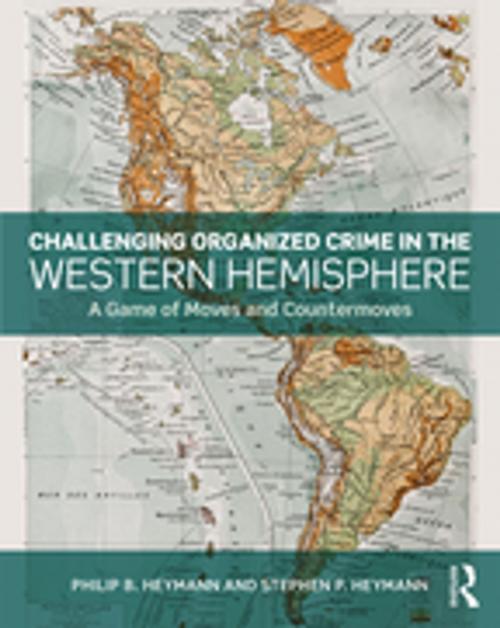Challenging Organized Crime in the Western Hemisphere
A Game of Moves and Countermoves
Nonfiction, Social & Cultural Studies, Social Science, Crimes & Criminals, Criminology| Author: | Philip B. Heymann, Stephen P. Heymann | ISBN: | 9780429948527 |
| Publisher: | Taylor and Francis | Publication: | July 3, 2018 |
| Imprint: | Routledge | Language: | English |
| Author: | Philip B. Heymann, Stephen P. Heymann |
| ISBN: | 9780429948527 |
| Publisher: | Taylor and Francis |
| Publication: | July 3, 2018 |
| Imprint: | Routledge |
| Language: | English |
Challenging Organized Crime in the Western Hemisphere: A Game of Moves and Countermoves takes the unusual approach of exploring and describing how organized crime groups develop their capacities in response to heightened powers of law enforcement; and how law enforcement in turn responds, creating an ongoing dynamic interaction. The book shows how a state, such as the United States, has and can develop new laws and practices in ways that enable them to deal with relatively large violent groups—and yet preserve the rule of law and civil liberties.
While most texts describe organized crime groups and the challenges to government they impose from a static perspective, the authors dissect the interaction over time of organized crime and democratic governance that has created the present structure and balance of advantages in the United States. Readers learn about the markets for contraband and extortionate protection that form the bulk of organized criminal enterprise, the vulnerabilities of the traditional practices and rules of law enforcement, the effects of globalization of criminal enterprises on their contest with the state, the effectiveness of various practices of law enforcement, and the continuing forces of change, often technological, in the businesses of organized crime and law enforcement that play important roles in the contest between them.
This thought- provoking book is ideal for students of organized and transnational crime in university programs and law schools, as well as researchers and legal practitioners, who seek to look beyond the simple traditional history of organized crime and develop a strategy to confront organized crime in the future.
Challenging Organized Crime in the Western Hemisphere: A Game of Moves and Countermoves takes the unusual approach of exploring and describing how organized crime groups develop their capacities in response to heightened powers of law enforcement; and how law enforcement in turn responds, creating an ongoing dynamic interaction. The book shows how a state, such as the United States, has and can develop new laws and practices in ways that enable them to deal with relatively large violent groups—and yet preserve the rule of law and civil liberties.
While most texts describe organized crime groups and the challenges to government they impose from a static perspective, the authors dissect the interaction over time of organized crime and democratic governance that has created the present structure and balance of advantages in the United States. Readers learn about the markets for contraband and extortionate protection that form the bulk of organized criminal enterprise, the vulnerabilities of the traditional practices and rules of law enforcement, the effects of globalization of criminal enterprises on their contest with the state, the effectiveness of various practices of law enforcement, and the continuing forces of change, often technological, in the businesses of organized crime and law enforcement that play important roles in the contest between them.
This thought- provoking book is ideal for students of organized and transnational crime in university programs and law schools, as well as researchers and legal practitioners, who seek to look beyond the simple traditional history of organized crime and develop a strategy to confront organized crime in the future.















